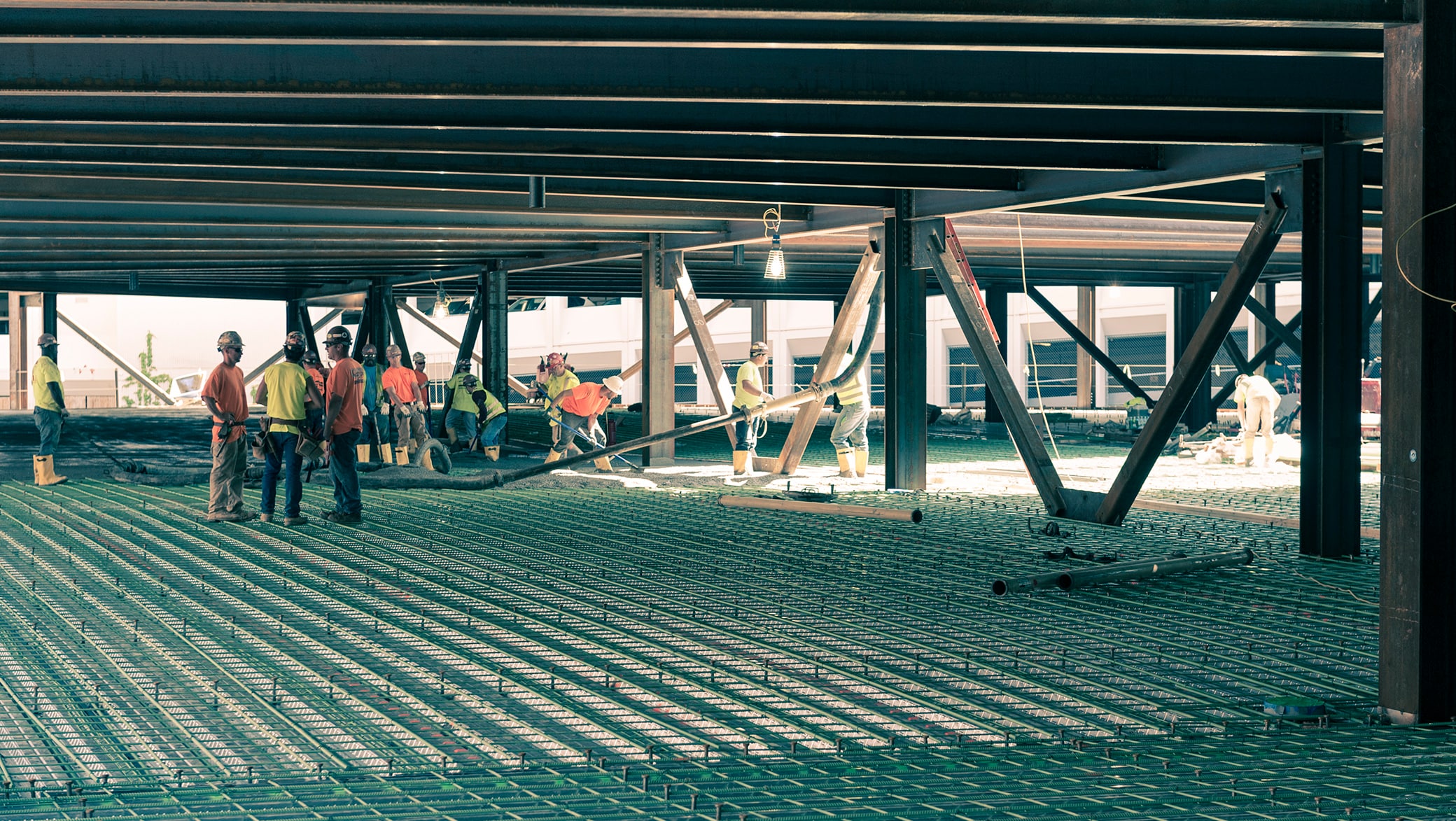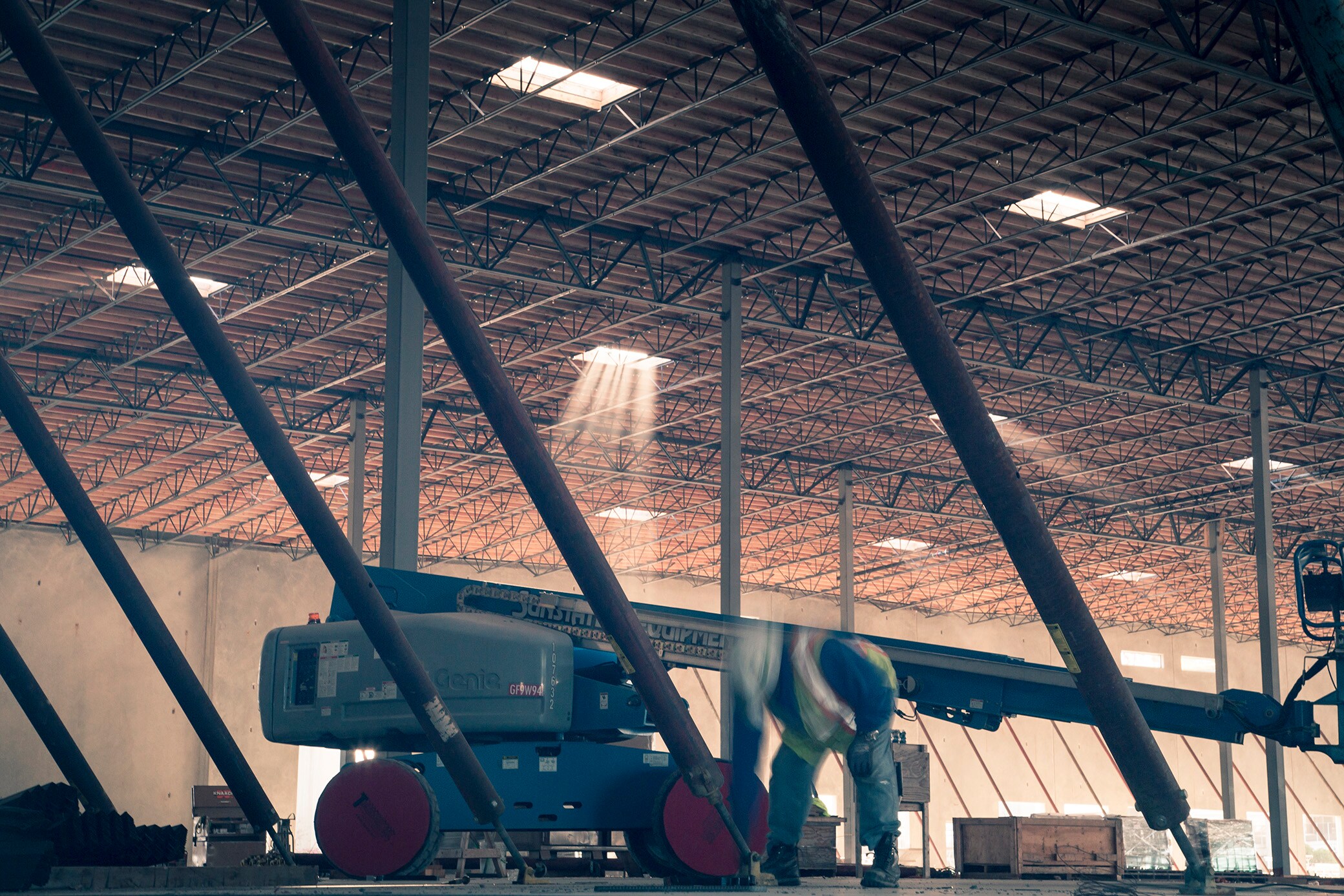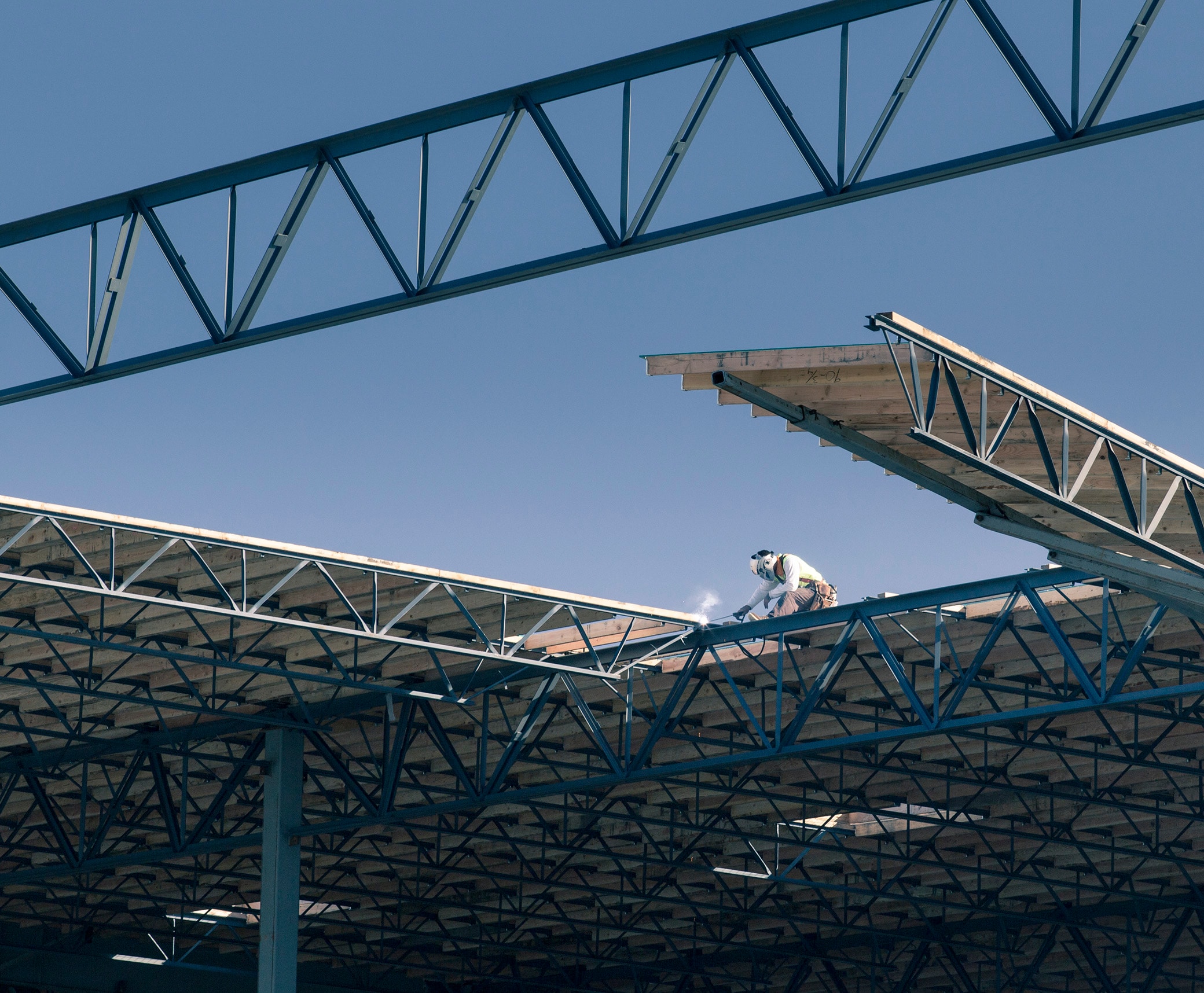
Keyboard ALT + g to toggle grid overlay
Photography
Real people doing real things
We use photography to bring the human connection into the Autodesk brand—to tell stories about specific things, industries, or activities. The key word is “real.” Photographs of real people designing and building real things is the focus of our brand photography. Read on for guidelines about shooting or picking Autodesk photos, as well as specific direction for photography in Manufacturing and Construction.
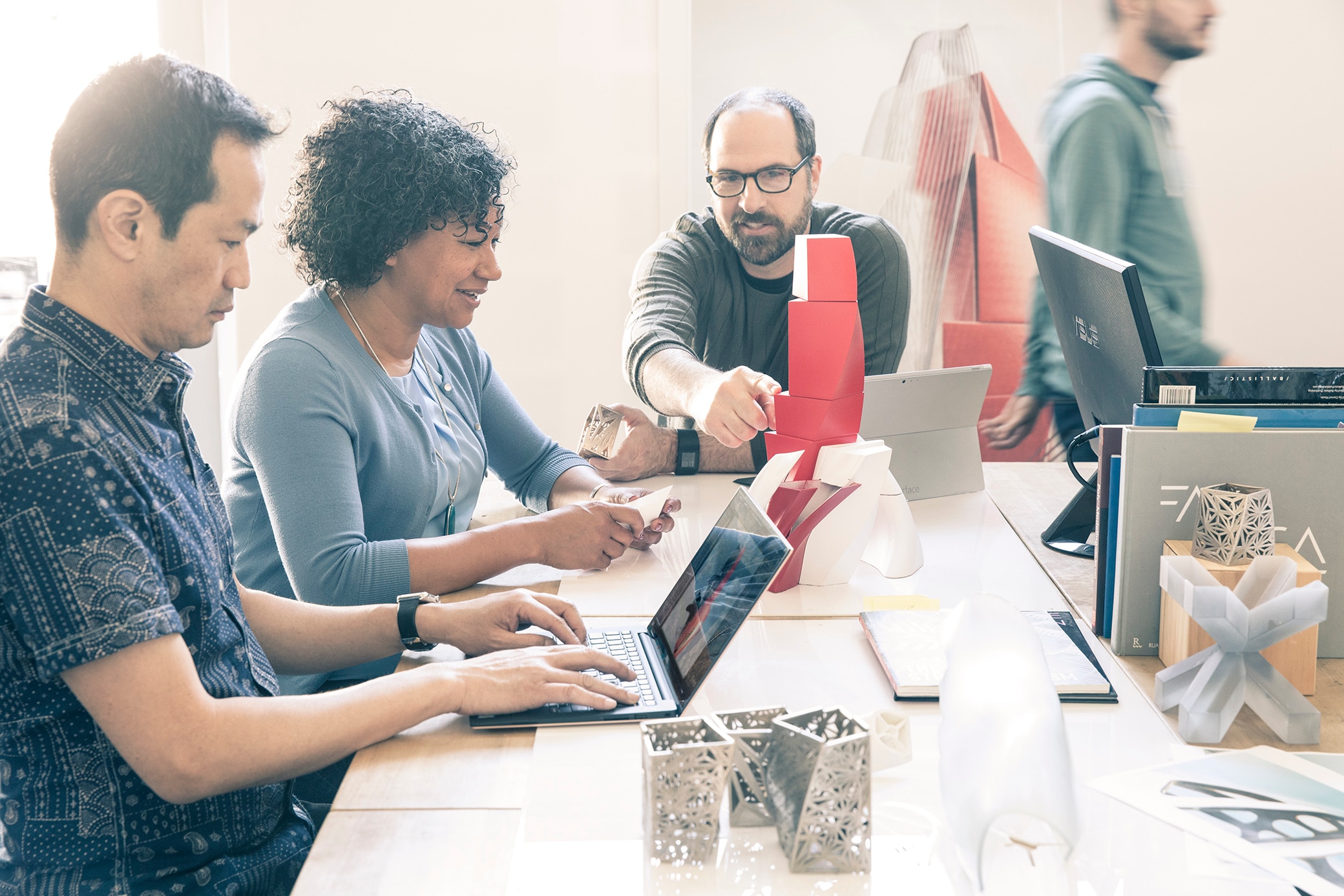
General photographic best practices
1. Don’t shoot photographs with your mobile phone. We are a high-tech company that creates beautiful, precision design software. Our photos need to look polished. Even if mobile phone resolution seems good, the size of a mobile phone camera sensor is extremely small. The colors and gradients do not look nearly as good as when shooting with a high-quality digital camera through a high-quality lens.
2. Pay a professional. If you can’t do that, pick a photograph from the DAM (access required). As a last resort, buy stock photos that adhere to the best practices listed on this site. For best results with stock, reach out to images@autodesk.com before your purchase. They will help you buy the highest resolution photograph possible with the appropriate usage rights—and also handle adding it to the DAM image library.
3. Do not grab still images from video. Video has frame-blending that causes blurriness when viewed one frame at a time. It is not a good substitute for a true photograph.
4. Use natural light when possible. When not possible, use artificial lighting to simulate natural light.
5. Show technology in action. Try to incorporate any appropriate computers, software, mobile devices, etc., into your scene.
6. See the composition section below for specific tips on good photo composition.
General composition tips
Photographic composition has a few general rules that cross over all our main photographic sub-categories. Below is an elementary set of guidelines for shooting good photographs. These compositional rules should be familiar territory for any photographer or designer.
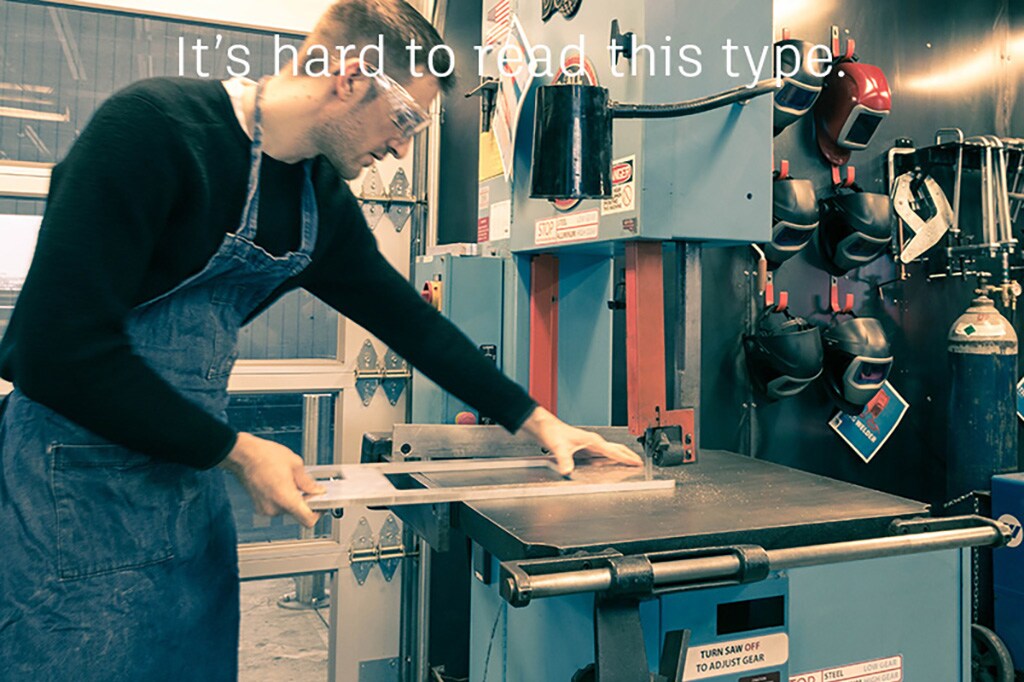
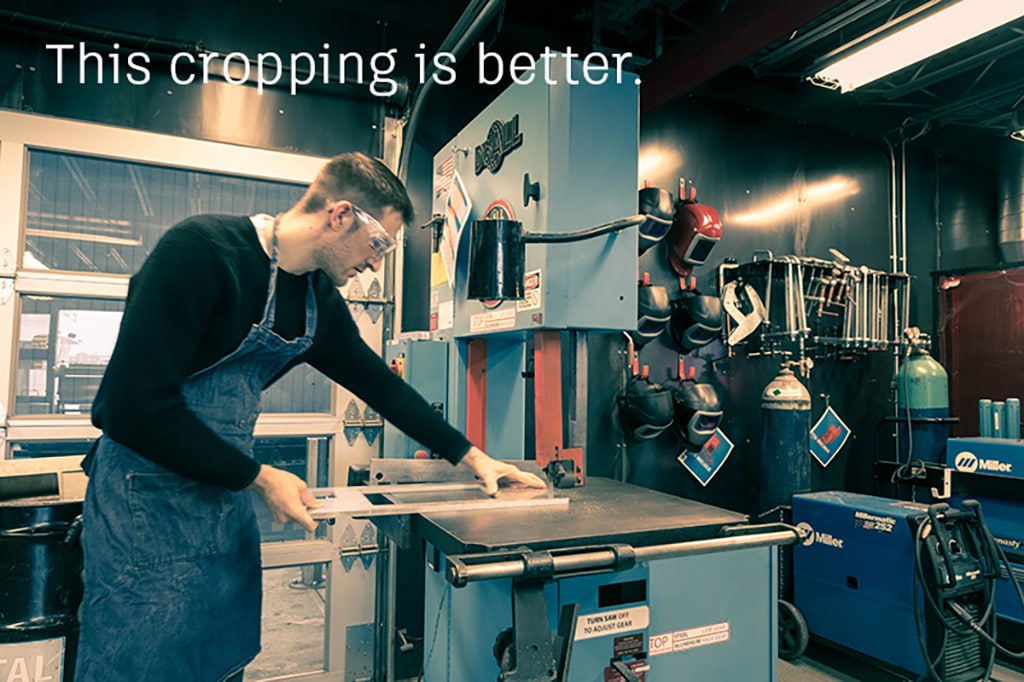
Leave room for text when shooting/cropping photographs. Avoid shooting photos that are noisy, packed with overlapping objects, or difficult to separate foreground and background elements. Remember that headlines and smaller text need a place to sit on most of our photographs.

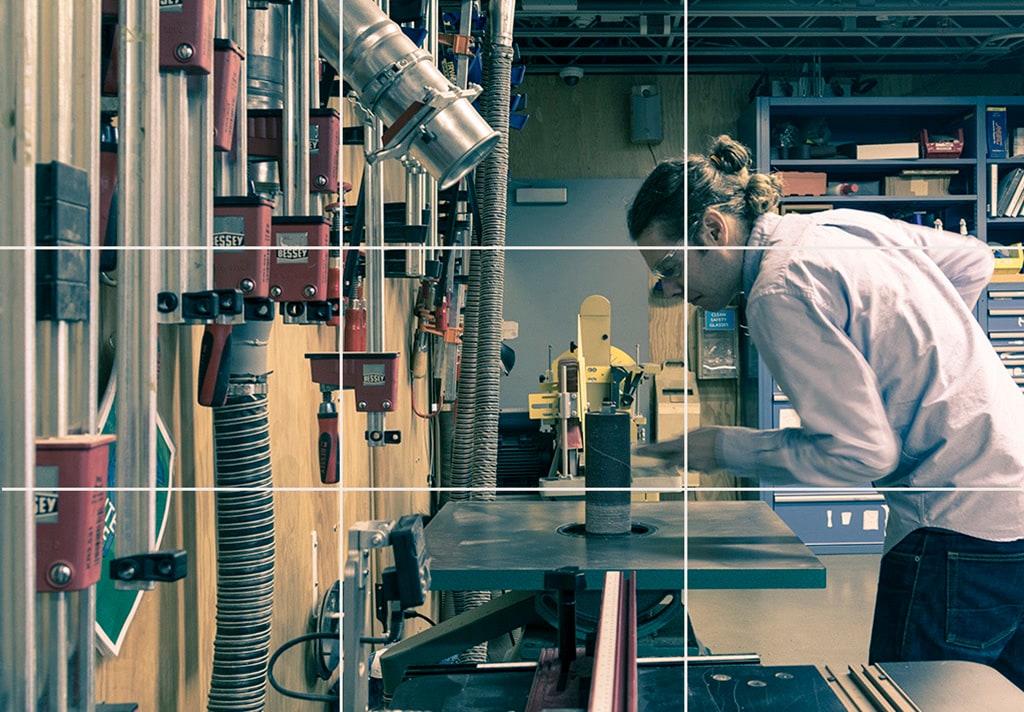
When in doubt, try the Rule of Thirds. Shoot photographs or crop them with the main subject on one of the lines that divide the frame into thirds (horizontally, vertically, or at the intersection of both). The photograph on the left is static and boring because the subject is in the center of the frame. The one on the right is more interesting with the subject spanning the ‘thirds’ lines.

Try to achieve a distinction between foreground and background. A purposeful lens and aperture selection will get you a narrow depth-of-field which can be really useful in separating the foreground from background. This helps bring the subject into sharp focus and provides soft areas that could be useful spots for placing text.
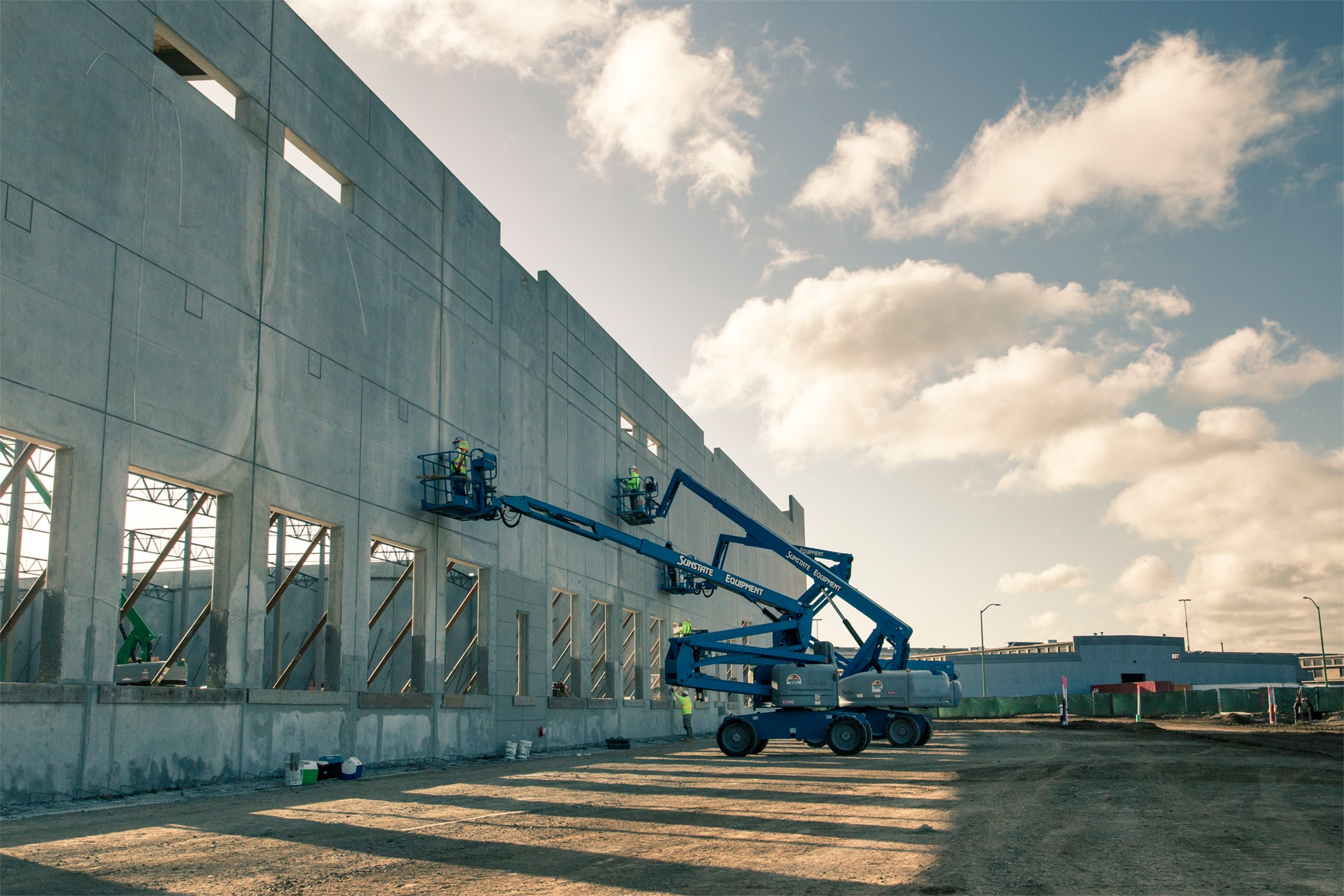
Choose a time of day that best maximizes dramatic lighting. Early morning or late in the evening when the sun is low will create much more dramatic, interesting photographs. Capture clouds instead of plain, blue skies whenever possible.
Photographing people and lifestyle
Autodesk is a software company, so we need to show photographs of people using our software tools. Often, these are photos of people working in an office with computers. Here are some tips for shooting good photos of people using Autodesk software tools:
1. Try not to show an isolated screen or screenshot. Get a person or multiple people in the shot.
2. Use real locations, whenever possible. If you need office photos, shoot in a real office. If you can't do this, create a believable set (see item 4).
3. Use natural, when possible. When natural light isn't available, use artificial light in a way the simulates natural light.
4. Create a believable story. Who are the people in the photo? What are they doing? What props and setting do you need to believably support the story?
5. Sometimes hired models will look more believable than un-trained "real people." In either case, you need to get model release forms for everyone appearing in a photo.
6. Seek diversity. Be sure to pay attention to credibility when using people for stories about specific regions.
7. Avoid overly posed people. Catching someone in mid-sentence or engaged in real activity makes the photo more believable.
8. Visible monitors should have Autodesk software on them. This can be composited in post-production, but first, be sure to secure usage rights to all content to be displayed.
Not every Autodesk user photograph needs to adhere to every one of these best practices. But, the more you can pull in, the better—and a body of work (a campaign, for example) should cover all of these.
Here are a few examples of people photographs that work well:

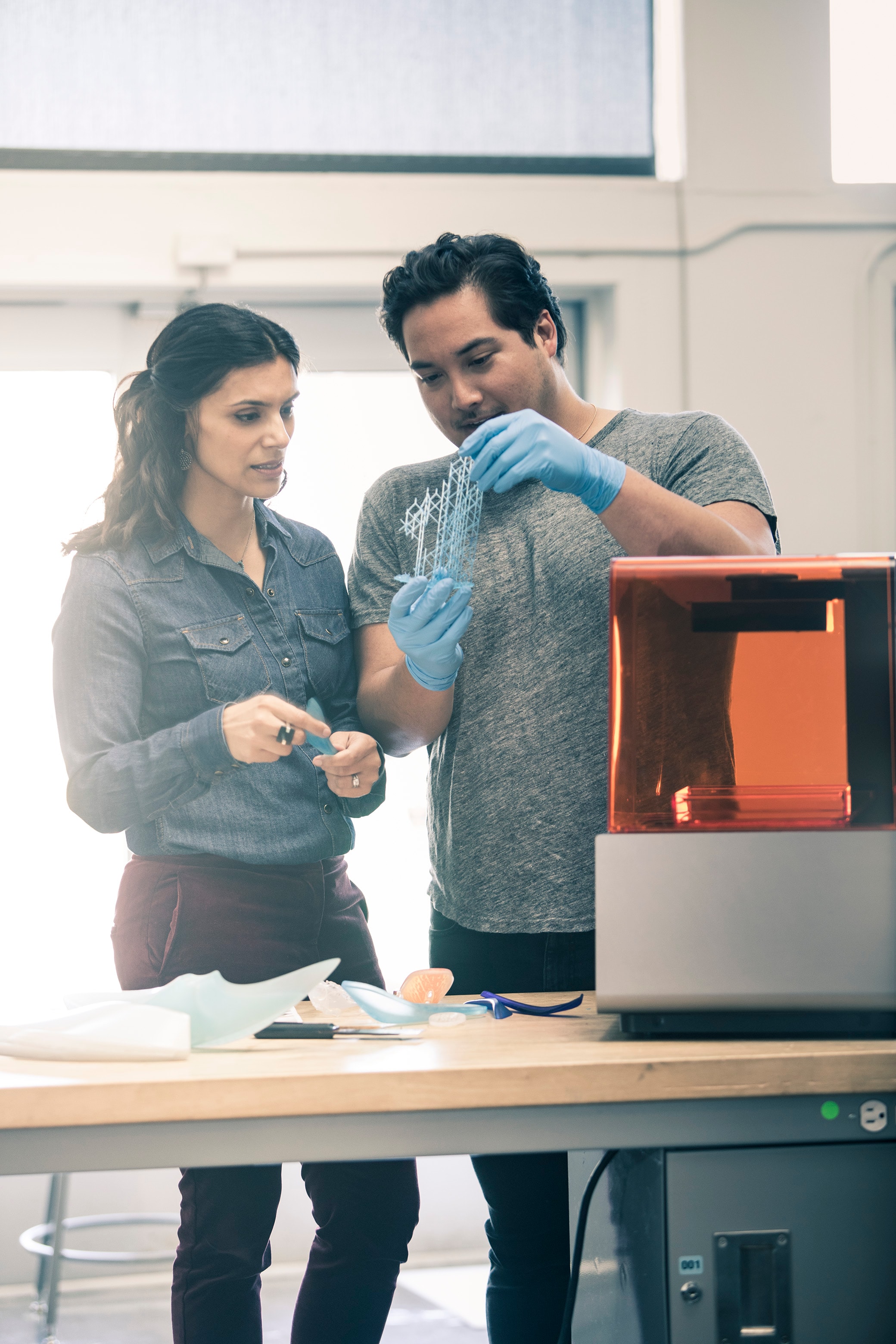

Design and manufacturing photography
Manufacturing photos are about people making things. While there might be supporting photographs of the objects themselves, the primary subject should be people in a shop or factory setting creating things, managing machinery, etc. Here are some tips for shooting Autodesk manufacturing photos:
1. Shoot photographs of people making things.
2. Incorporate motion—particularly people in motion—by using in-camera motion blur features. (Don't do post-process blurring).
3. Show “The Future of Making Things.” A shop or factory setting with high-tech manufacturing processes visible—CNC, robotics, 3D Printing, etc.—is important to crafting a believable image.
4. Unfinished objects that are in the process of being created are preferable to finished, beautiful products.
5. Capture the integration of computers and software into the manufacturing process (PCs, tablets, CNC control panels, etc.).
6. If you are showing a recognizable factory or production line, make sure that they are Autodesk customers. This is particularly important if you are purchasing photography instead of shooting it at a specific Autodesk customer’s location. Any photoshoot must include proper consent forms and you will likely need to remove all third-party logos (this can be done in post-production).
Not every manufacturing photograph needs to adhere to every one of these best practices (except #6), but the more you can work in, the better. A body of work (a campaign, for example) should cover all of these.
Here are examples of good manufacturing photographs:
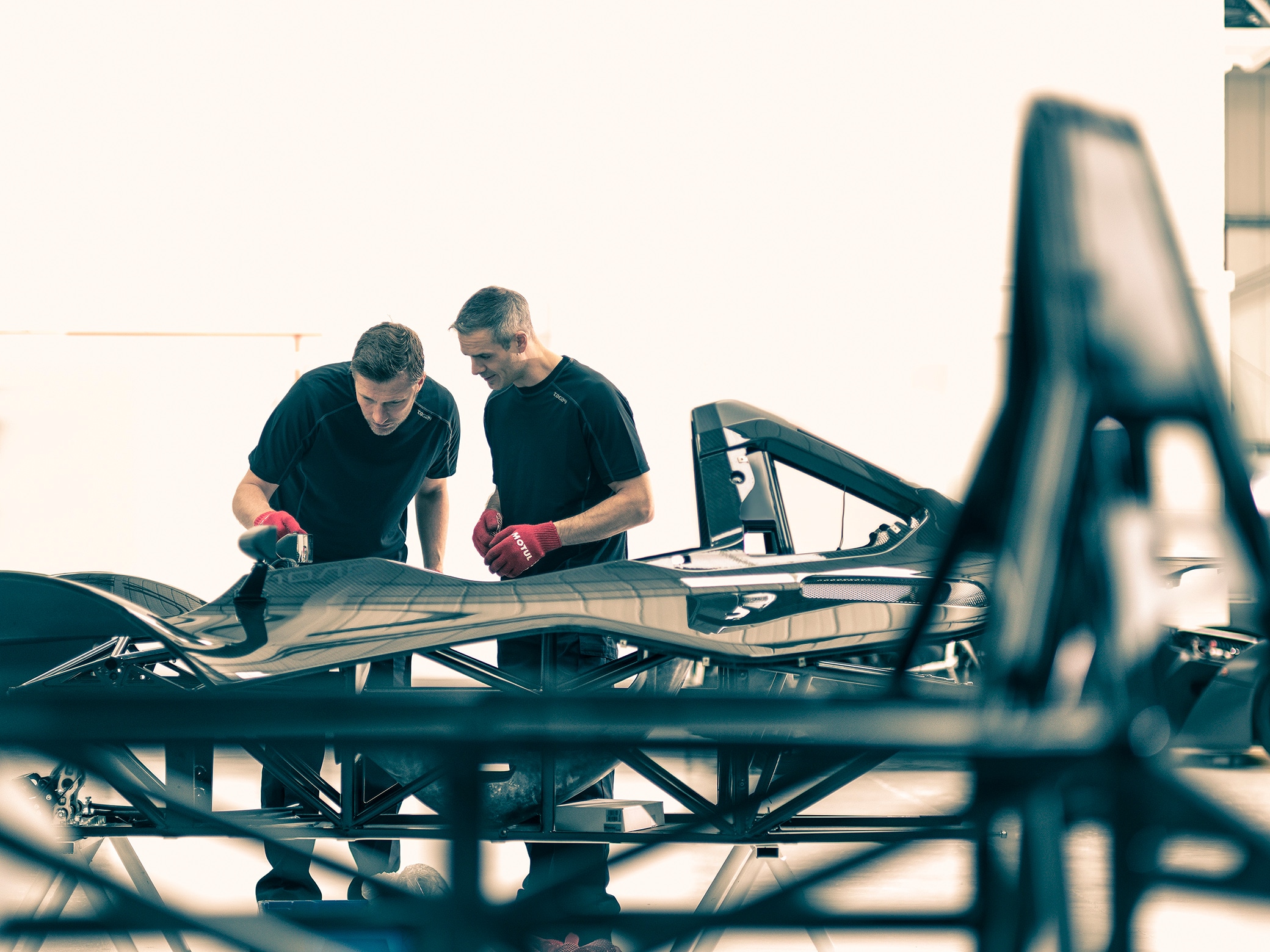

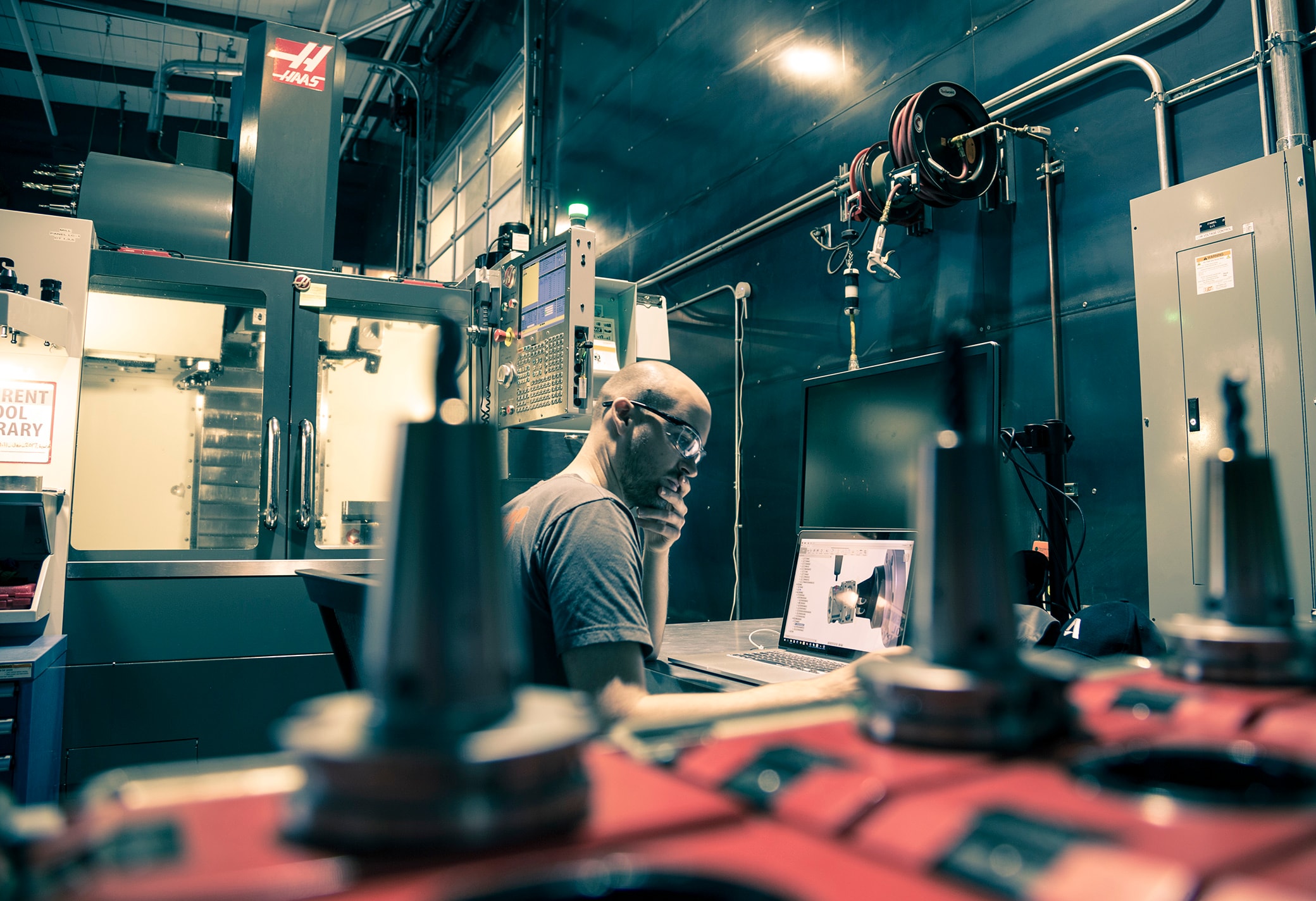
Construction photography
Construction photography, like manufacturing above, is primarily images of people making things. In the case of construction, those things are buildings and infrastructure. The people represented in construction photos need to be believable to someone in construction. Our customers need to be able to identify with the people in these photographs.
1. Capture people building structures.
2. Incorporate motion—either via motion blur (in-camera) or implied motion with the subject caught in action. Do not create the image blur in post-production.
3. Try to incorporate equipment or technology as part of the image. Include tablets, bulldozers, cranes, AR goggles, laser scanners, etc.
4. Plan a believable cast of characters. Use regionally-appropriate ethnicities, real workers who appear “dirty” (if appropriate), and present a realistic vision of how someone doing that job would look (even if they are models).
5. Be careful about depicting construction activities that could be deemed unsafe from a standards and best-practices perspective. It’s best to have a construction safety expert evaluate your shots before using them.
6. Plan some establishing shots with a sufficiently wide-angle to give some context of the project scale/style. Close-ups are okay for supporting imagery.
7. Focus on commercial construction, as opposed to residential.
8. Pay attention to time of day, weather, and lighting conditions to create dramatic images. Shooting against a cloudless sky at high noon, for instance, will usually result in boring, flat images.
9. Do not depict paper blueprints. We are trying to digitize the construction site at Autodesk.
Not every construction photograph needs to adhere to every one of these best practices, but the more you incorporate, the better. A body of work (a campaign, for example) should cover all of these.
Here are examples of good construction photographs:
